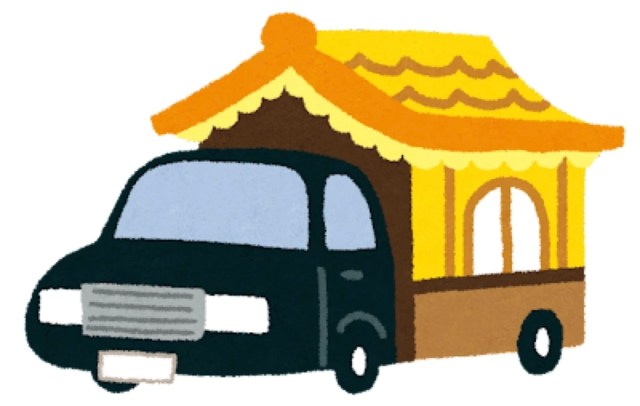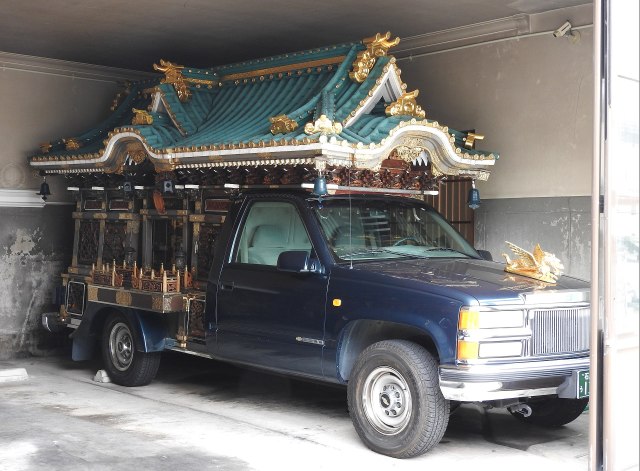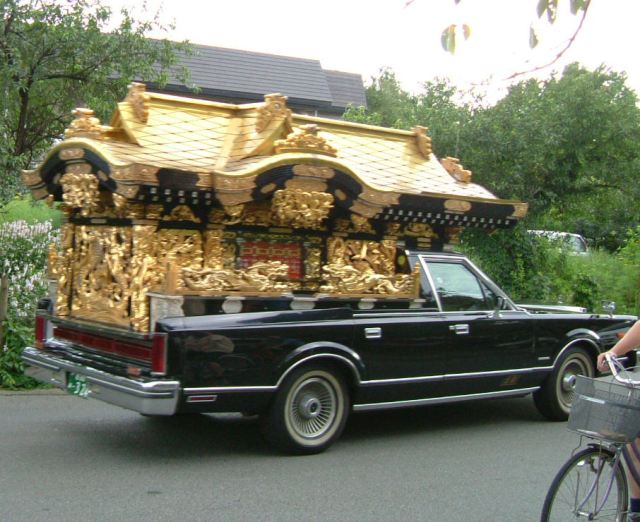What’s it like to work as a hearse driver in Japan?【Interview】

Making a living from driving the dead around.
There are likely very, very… very few kids who say they want to be a hearse driver when they grow up. And yet, when you think about it, it’s probably a pretty decent job to have. There’s always a steady flow of work and everything tends to move at a relaxed pace.
Then again, I could be wrong because I, like many people, don’t really know everything that goes into being a hearse driver. Neither did our Japanese-language writer Go Hatori, so he got in touch with one and learnt the ins and outs of one of society’s often overlooked vocations.
Go spoke with 42-year-old Mr. K, an experienced hearse driver ready to spill the prayer beads about everything the job entails from how it feels to how much it pays.
Go: Hello, Mr. K. What kind of company to you belong to?
Mr. K: I work for a company that mainly deals with the transportation of corpses by hearse.
Go: So, you don’t work for a funeral home?
Mr. K: “It’s a common misconception that I’m a driver for a funeral home, but my company is mostly responsible for transporting the deceased. Large funeral homes might have their own in-house hearse and sleeper car to handle transportation themselves, but recently there are many funeral homes that don’t have cars.
By the way, the funeral home is the business that handles all of the funeral arrangements and proceedings. They are the first point of contact with bereaved families, so in our industry they’re like major advertising agencies.
▼ A “sleeper car,” or “shindaisha,” is the Japanese term for a type of first-call vehicle used to transport bodies for non-ceremonial usage. Shindaisha usually resemble normal vans, while the more ornate type of hearses, such as the one pictured below, are called “reikyusha” (“casket cars”) and are used to transport the body to the crematorium following the funeral service.
 Image: Wikipedia/MathieuMD
Image: Wikipedia/MathieuMD
Go: What lead you to work as a hearse driver?
Mr. K:”I wanted to work as a driver, so I originally just started looking around at those kinds of jobs.
Go: What kind of work does the job entail?
Mr. K: The job is basically picking up a corpse at the request of a funeral home. They can either be picked up at a hospital, retirement home, police station, or their own home. I just follow the funeral home’s instructions.
Sometimes, my company with take care of the body and other times I take the deceased to their own home. Recently, it’s more common for us to take the body to our company and then transport it to the crematorium later.
Also, if the deceased is left with our company, we can make arrangements for the family to visit.
Go: You take them to their homes sometimes?
Mr. K: “Not very often, but when I do, it’s usually a pretty big home when I do.
Go: What kind of hours do you work?
Mr. K: We have a total of 30 drivers and basically we work in shifts. Of course, that includes graveyard shifts.
Go: What kind of structure does your company have?
Mr. K: Basically, two or three people will be standing by at the office and when a call comes in they’ll take out a car. While waiting, they’ll answer the phone, prepare for visits by the bereaved, and apply dry ice to the bodies if requested to do so by the funeral home.
Go: It seems like a hard job.
Mr. K: Everyone always asks me, ‘It looks like a hard job. Are you OK?” But, you get used to it after about three months. However, I do get sad when I have to transport a young person who took their own life.
Go: What things do you really need to be careful about?
Mr. K: When we get a request to take someone from a funeral home, we really need to be punctual. Because of that, we need to be on time even if there’re traffic jams or construction, so I study the roads extremely well to always arrive on time.
Also, the hearse is very long and wide, so it requires some advanced driving skills. Narrow roads can be very difficult and if you don’t know them well, you’re screwed.
Other things are knowing the polite things to say to the bereaved and staff at the funeral home, as well as smoothly moving the deceased from the bed to the stretcher so it doesn’t make a sound.
 Image: Wikipedia/Ümit Yaldiz
Image: Wikipedia/Ümit Yaldiz
Go: If you don’t mind me asking, how much do you make?
Mr. K: My take-home salary is about 250,000 yen (US$1,777) a month.
Go: What is your honest feeling about this kind of work and what do you think it’ll be like in the future?
Mr. K: I’ve had a few different jobs so far but this one is very rewarding and I feel very appreciated by people. As far as driver jobs go, it’s the one where I’ve felt the most appreciated.
But there are problems. Currently, there are a lot of older drivers and very few young drivers. Hearse driving also takes years of training, so people can’t just jump into it. That and the fact that people tend to shy away from jobs like this mean there may be far fewer hearse drivers in the future.
We’d like to thank Mr. K for his candor and unique insight into the world of hearse driving in Japan. Stay tuned for the next edition of “Curious Job Interview” to learn more about Japan’s lesser known occupations!
Top image: Irosutoya
● Want to hear about SoraNews24’s latest articles as soon as they’re published? Follow us on Facebook and Twitter!
Credit:




0 comments: